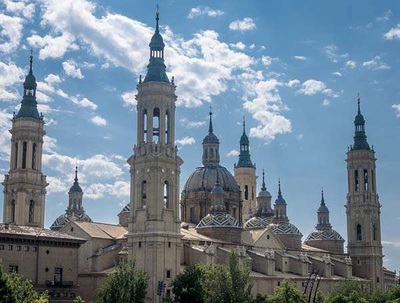The Land
In the region of Aragon, northeastern Spain, approximately 150 miles south of Lourdes, France, lies the historic city of Zaragoza with its picturesque view of the Pyrenees mountains that soar almost 10,000 feet. A diverse territory with mountains in the north and south and a great valley in the center, it lies by the Ebro river, the second longest and one of the most important rivers on the Iberian Peninsula. It is a sunny city with a semi-arid climate, (averaging only 12.6 inches of precipitation annually) entirely surrounded by mountains that block off moist air from the Atlantic and Mediterranean. At times, temperatures in the summer reach 112. °F and the winters are cool due to fog or because of a dry northwesterly wind known as the Cierzo.
This strategic colony was conquered by Rome in 14 B.C. and named Caesaraugustus after the first Caesar who was reigning at the time. It became an important outpost as a defense against the advancing Visigoth Kingdoms and grew to a large city with an estimated population of 30,000 at its peak. The Muslims arrived in 714, seized the city and controlled it until the 12th century and it soon became a central point for them as they invaded the lands around the Ebro Valley and into France. It prospered and developed into an open, cultural and artistic haven, where intellectuals of all backgrounds and religions flocked.
Four centuries of Muslim rule were finally put to an end when the Christian King, Alfonso I, marched into town and conquered it in 1118. He renamed the city Zaragoza, and made it the capital of the newly formed Kingdom of Aragon. This city was home to King Ferdinand II and Queen Isabella of Castile who would unite Spain as it is today.









 RSS Feed
RSS Feed
